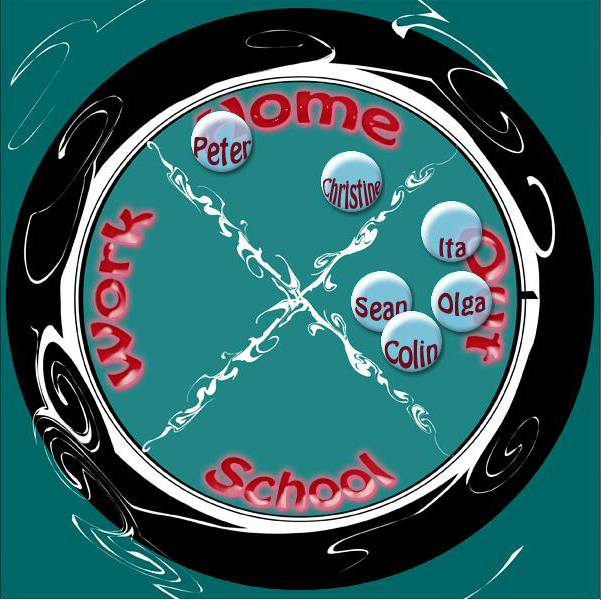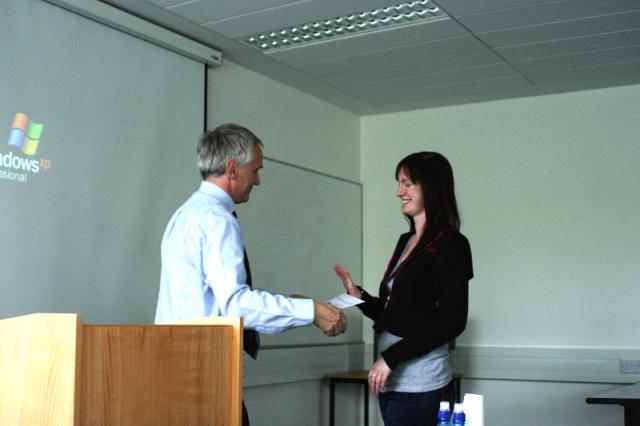Project Summary
The Whereabouts Clock was a final year project undertaken by Christine Trant and under the supervision of Lorcan Coyle. This project attempts to display the locations of individuals in an unobtrusive display from sensed real-time location information. This deals with the issue of combining real-time data with unobtrusive displays; real-time data is concerned with privacy while adding real-time data to situated displays is still relatively new. The Whereabouts Clock originally implemented by Microsoft Research is a situated display to show the whereabouts of family or friends. The Whereabouts Clock is used to find the locations of people such as family members and display it in a way that is unobtrusive, similar to the way a clock displays the time. While Microsoft Research use cell towers to track mobile phones, this project used computers with machine IDs and visible wireless devices to track users. The result of this project has been the development of a novel implementation of a Whereabouts Clock to determine and display a user's location. To test the value of the Whereabouts Clock, a user study was carried out over a course of 5 days. The user study found that the Whereabouts Clock was well received and would be a useful application for friends and family. In March 2008 Christine and Lorcan visited the Socio-Digital Systems laboratory in Microsoft Research Cambridge, where the original Whereabouts Clock was originally developed. They were invited to visit by Lorna Brown and Abigail Sellen (who looked after them for most of the day - thank you!). During the visit they met with a number of Microsoft Research researchers, including Alex Taylor, Tim Regan, and Sharam Izadi and had a number of fruitful discussions with them about the project. Christine wrote a blog post up on the visit.
In March 2008 Christine and Lorcan visited the Socio-Digital Systems laboratory in Microsoft Research Cambridge, where the original Whereabouts Clock was originally developed. They were invited to visit by Lorna Brown and Abigail Sellen (who looked after them for most of the day - thank you!). During the visit they met with a number of Microsoft Research researchers, including Alex Taylor, Tim Regan, and Sharam Izadi and had a number of fruitful discussions with them about the project. Christine wrote a blog post up on the visit.

Further Information
Pictured below is Christine being presented with a prize for the end-of-year presentation of her project (the award was presented by the head of school, Dr. Joe Carthy). Christine's final year project report document is available here and over the course of the year she maintained a blog that contains detailed progress of her project. There are more images from this project in the 2008 fourth year project image gallery. If you are interested in following up on this work or need further information contact Lorcan. (Thanks to Cormac Phelan for permission to reproduce this photo.)
(Thanks to Cormac Phelan for permission to reproduce this photo.)